TheBlackPirate
Bluelighter
- Joined
- Dec 16, 2015
- Messages
- 680
USAToday said:More than a decade after release, they all come back
Silvestre Segovia had vowed that he would never return to solitary confinement.
Kevin Johnson, USA TODAY
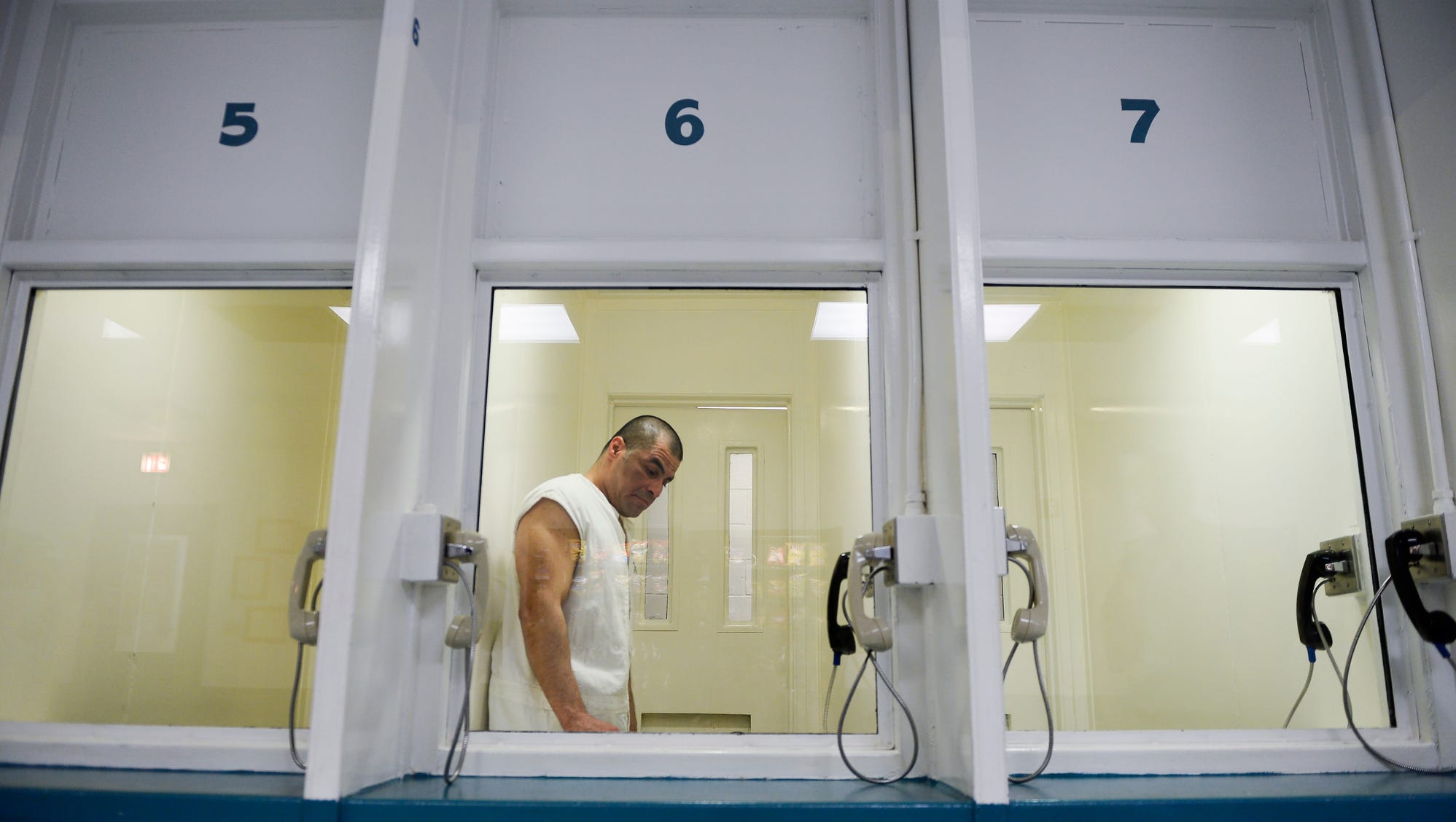
Introduction
A reality too hard to believe
IOWA PARK, Texas — Silvestre Segovia had vowed many times over that he would never return to solitary confinement.
Languishing in the vast Texas prison system's solitary confinement wings for more than a decade had exacted a heavy emotional toll. And there was so much to discover about a new world that confronted him on a much-anticipated exit that chilly morning, Nov. 15, 2002. A loyal girlfriend waited 255 miles away. There might even be a market for the catalog of detailed sketches that he had created to pass the years of numbing isolation.
But where to begin?
Silvestre Segovia, then 32, with his wife, Ortencia,
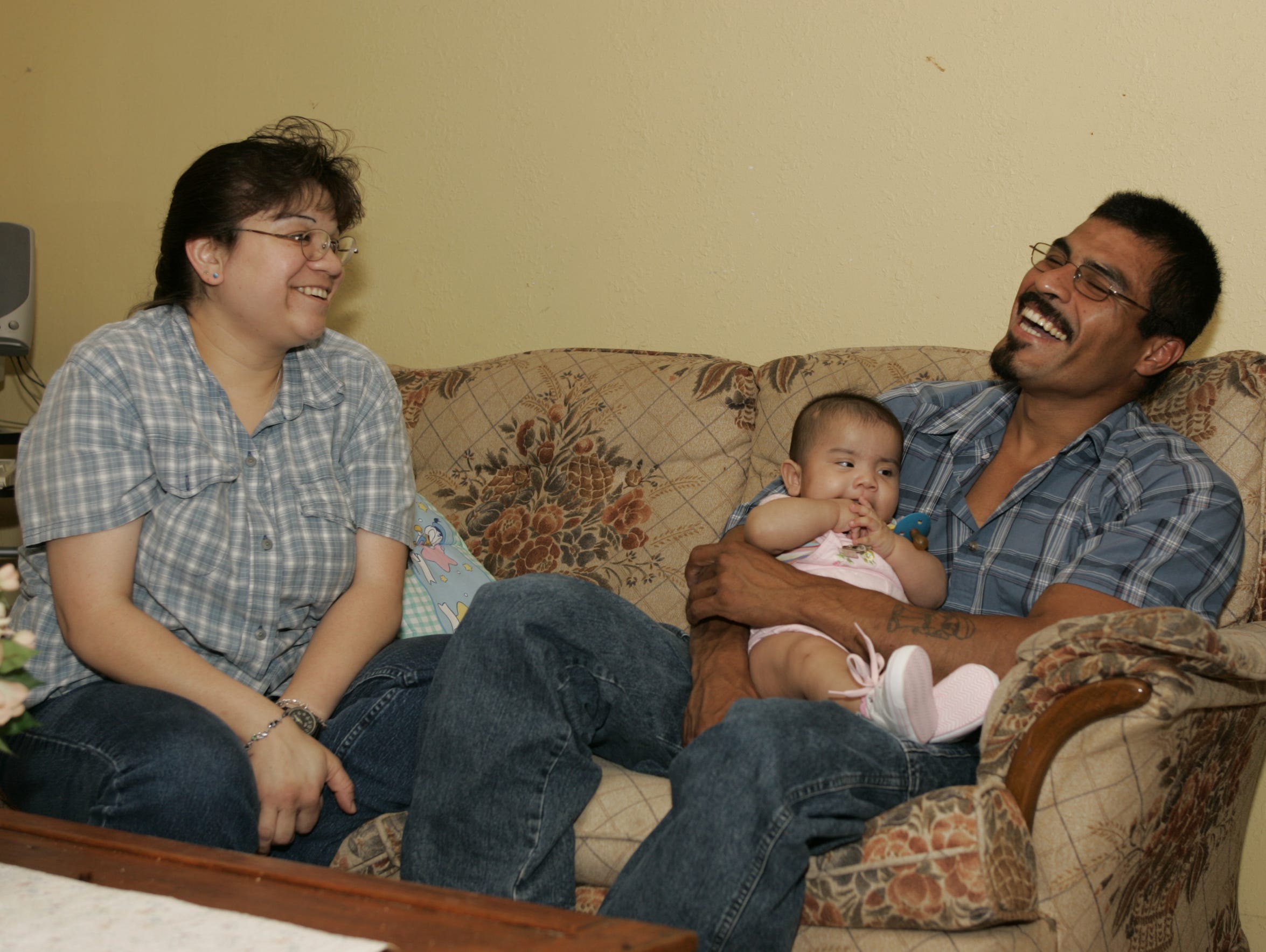
Silvestre Segovia, then 32, with his wife, Ortencia, and their daughter, Destinee, then 5 months old, in their home in Kerrville, Texas, in May 2005.
(Photo: Chris S. Covatta, for USA TODAY)
Since 2002, USA TODAY has been tracking nine Texas offenders released that November day, including Segovia, all of whom spent prolonged periods in isolation, either as punishment for misconduct in prison or for their association with criminal gangs. Segovia and the eight other inmates freed from solitary on the same day have all returned at least once — and some multiple times. Some describe a type of sensory paralysis that seemed to overwhelm them once they were finally free, a troubling consequence of the most extreme condition of confinement that has recently drawn the scrutiny of the Justice Department, prison officials and lawmakers across the U.S.
For all the enthusiasm Segovia harbored for a new start on the outside, the lasting effects of the harsh experience on the inside appeared to hold him back. After settling in with Ortencia Rosales, now his wife, he would spend many days sitting in the dark. The small living room of their Kerrville home was at first almost too overwhelming to navigate, compared to the cramped cell he occupied for 23 hours every day. Ineligible for substance abuse treatment because of his placement in segregation, he repeatedly succumbed on the outside to a longtime source of personal ruin, alcohol, picking up three drunken driving charges in just five months.
It is no surprise, then, that he is now back in a more familiar place — solitary confinement. Alone in a windowless cell, no more than 8 by 10 feet, is a place where at various times he has spent nearly half of his 43 years. The conditions of confinement are indeed extreme for drunken driving offenses, yet Segovia's past association with the Mexican Mafia prison gang has made his segregation mandatory.
"When I look back, I can't believe it,'' Segovia said in a recent interview.
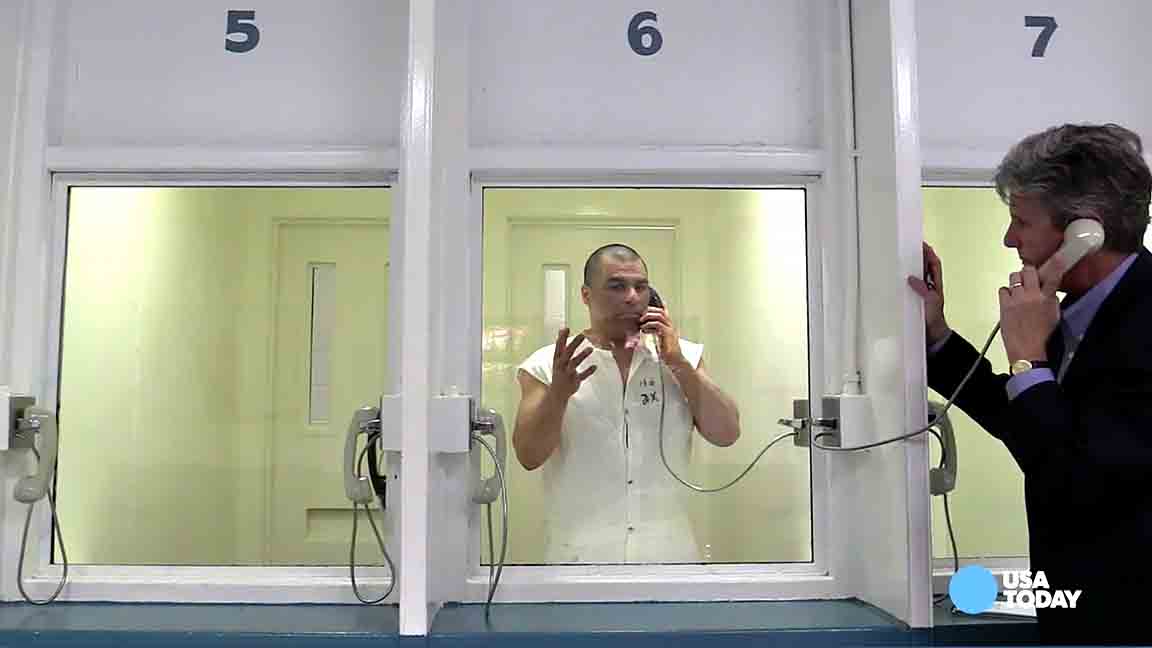
USA TODAY talks with Silvestre Segovia, who's spent much of his life in solitary confinement, about the impact it has had and how he doesn't "want to let this place get to me."
Chapter 1
'Literally drives men mad'
For many of the nine Texas inmates, their lives after their release from solitary have taken tragic turns:
• Adam Morales, who following his 2002 release described a perpetual state of vertigo in which he often found balance by walking with his back to walls, returned to solitary just two years after he was freed. He is scheduled for release in 2021.
• Angel Coronado, who has returned to prison four times in 13 years, has struggled with weekly bouts of depression in which he is rendered virtually uncommunicative. His most recent release came in August, and he has been unemployed since.
• Convicted murderer Bruce Butler, rearrested for burglary two years following release, was described in recent parole documents as possessing "elements of brutality'' that make him a "continuing threat to public safety'' after years locked down. He is scheduled for release in 2025.
A pencil sketch drawn by Silvestre Segovia while in

A pencil sketch drawn by Silvestre Segovia while in solitary confinement.
(Photo: Provided by Segovia’s wife, Ortencia)
Their experiences and those of thousands of others are now striking, real-life exhibits in a fast accelerating debate over solitary confinement's continuing place in the American penal system. The extreme conditions are a legacy of harsh criminal justice policies, enacted more than a generation ago, that are now part of a broader re-examination, from statehouses across the country to the White House.
In September, the Association of State Correctional Administrators, a coalition of state and federal prison authorities, characterized the prolonged isolation of offenders as "a grave problem'' in the U.S., where little information exists to evaluate confinement conditions, the policies governing assignments to segregation and the numbers of people being held in such conditions.
In perhaps the most comprehensive audit of "administrative segregation'' in the U.S., the association of prison administrators and Yale Law School concluded in September that as many as 100,000 people were being held in some form of restricted housing in America's prisons. (The number did not include inmates in local jails, juvenile detention, immigration holding facilities or military prisons.) A decade ago, according to the report, estimates varied from 25,000 to 80,000.
"Most jurisdictions had no fixed time limits on administrative segregation,'' the report found. "In a substantial number, people remained in segregation for more than three years.''
Among the report's most unsettling findings: Of the 30 prison systems that tracked how inmates were prepared for release, it found that in 2013, an estimated 4,400 offenders were released directly from solitary to their communities, with no transition period.
Supreme Court Justice Anthony Kennedy has cautioned

Supreme Court Justice Anthony Kennedy has cautioned against the risks of solitary confinement.
(Photo: Denis Poroy, AP)
Craig Haney, a psychology professor at the University of California, Santa Cruz, who has long studied the effects of prolonged isolation, said the conditions of confinement represent "the most extreme example of how far our incarceration policies have gone in the wrong direction.''
"It benefits no one,'' he said.
Last month, the Supreme Court was asked to decide whether solitary constituted cruel and unusual punishment even for those awaiting execution. The court declined to consider the case, yet Justice Anthony Kennedy has raised serious questions about the practice.
"Research still confirms what this court suggested over a century ago: Years on end of near-total isolation exact a terrible price,'' Kennedy said in a June opinion on another case. "The judiciary may be required, within its proper jurisdiction and authority, to determine whether workable alternative systems for long-term confinement exist, and if so, whether a correctional system should be required to adopt them."
In March, Kennedy offered an even more blunt assessment. "Solitary confinement,'' the justice told a congressional panel, "literally drives men mad."
Chapter 2
'I can see a little light'
Silvestre Segovia does not resemble a "madman.'' But the battle waged most every day to maintain a semblance of psychological equilibrium is plain.
There have been no visitors in nearly four years, except for an interview with USA TODAY. His wife, Ortencia, cannot afford the 350-mile trip that would require at least one night in a hotel with her two young children. As a result, human contact has been reduced to interactions with corrections officers or "yelling'' through the walls at other inmates along the narrow wing of cells.
The days are roughly organized around meal deliveries: breakfast at 3 a.m., lunch at 10 a.m. and dinner at 3 p.m. Until recently, when he was moved to a cell with a partial view of a distant window, there was often no telling day or night.
Silvestre Segovia has spent much of his life in solitary
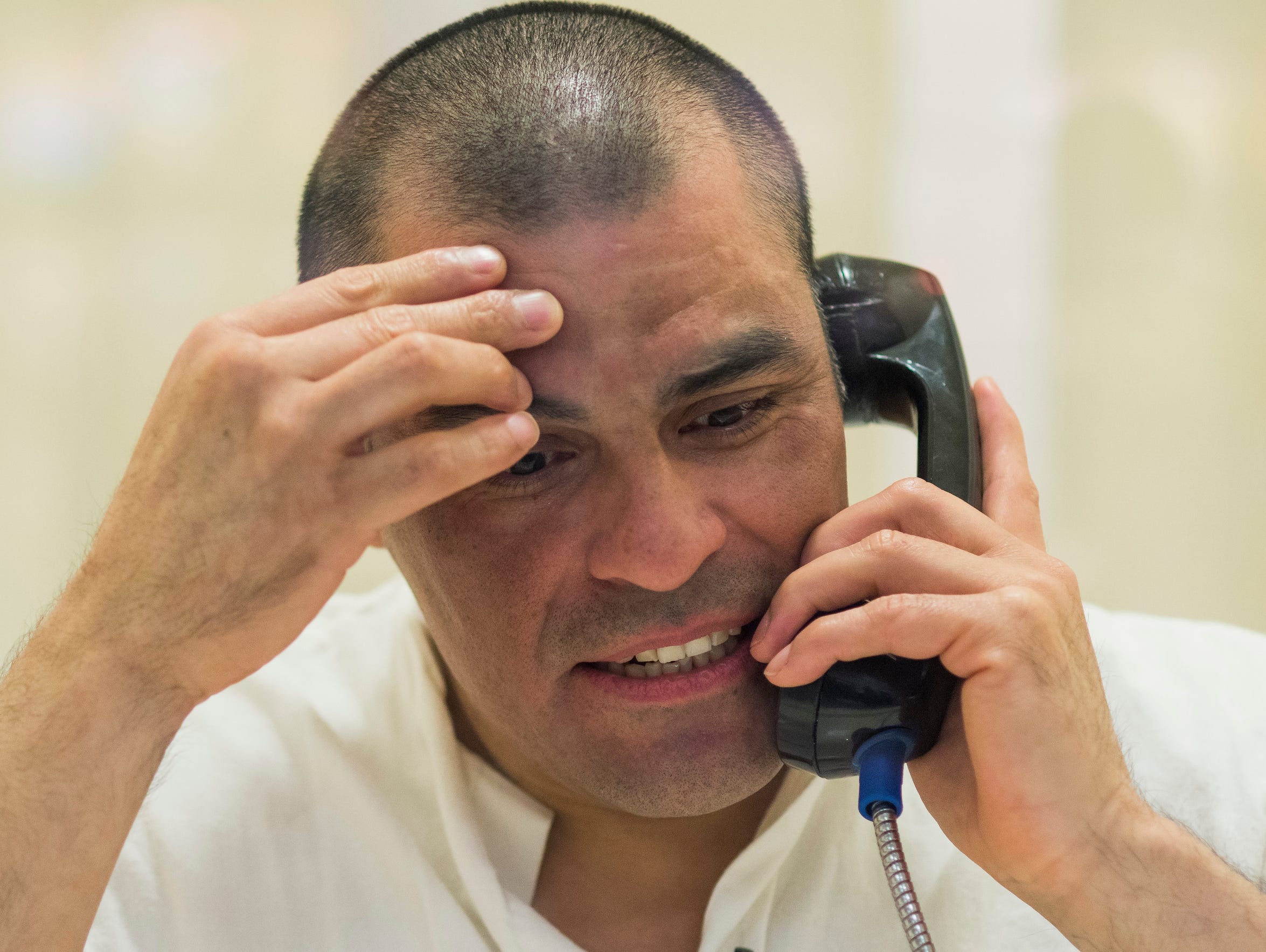
Silvestre Segovia has spent much of his life in solitary confinement.
(Photo: Robert Hanashiro, USA TODAY)
"I can see a little light now,'' he said excitedly, as if reporting a major new discovery. The hour he gets to exercise — alone — in a covered pen is the time that he most "feels alive.'' But Segovia said it had been about two weeks since he last left his cell because of correctional staff shortages.
There are occasions, Segovia said, when mental health counselors are available. While he has considered seeking help, Segovia has largely resisted for fear of incurring the wrath of other inmates who closely watch for such things from their cell doors.
"They would say, 'he's losing his mind,' " Segovia said, acknowledging rigid resistance among most inmates against betraying any personal weakness that another could attempt to exploit. "The next thing you know, I'm a full-blown lunatic.''
Even in isolation, "your reputation is all you have,'' Segovia said.
Barring an early parole (his case is currently under consideration), Segovia has slightly more than six years remaining on a term, all of it likely to be served alone in the same spartan cell where his detailed drawings, letters to Ortencia and fondness for John Grisham novels fill the unending voids. The only possible option for improving his conditions of confinement — assignment to general population — would require a repudiation of his long association with the Mexican Mafia.
The Texas Department of Criminal Justice has a renouncement program for "threat group'' members, though Segovia said that even consideration of such an option would likely put him in considerable jeopardy.
He is clearly not comfortable publicly discussing the matter and politely puts an end to it.
"I shouldn't talk about that,'' he said.
Chapter 3
Balancing public safety
Segovia is one of more than 5,000 Texas offenders being held in segregation. And while the state has historically maintained some of the largest numbers in solitary, Texas Department of Criminal Justice spokesman Jason Clark said officials have been actively moving to cut those numbers along with the overall prison population, which now stands at about 150,000.
Since 2006, Clark said, the administrative segregation population has dropped from 9,542 to 5,602 as of July 2015. Clark said the state is employing a variety of diversion programs, including gang renouncement, to drive the numbers down. More than 4,500 offenders have completed the disassociation program, known as GRAD, since its start 15 years ago. An additional 255 are expected to complete renouncement requirements by the end of this year.
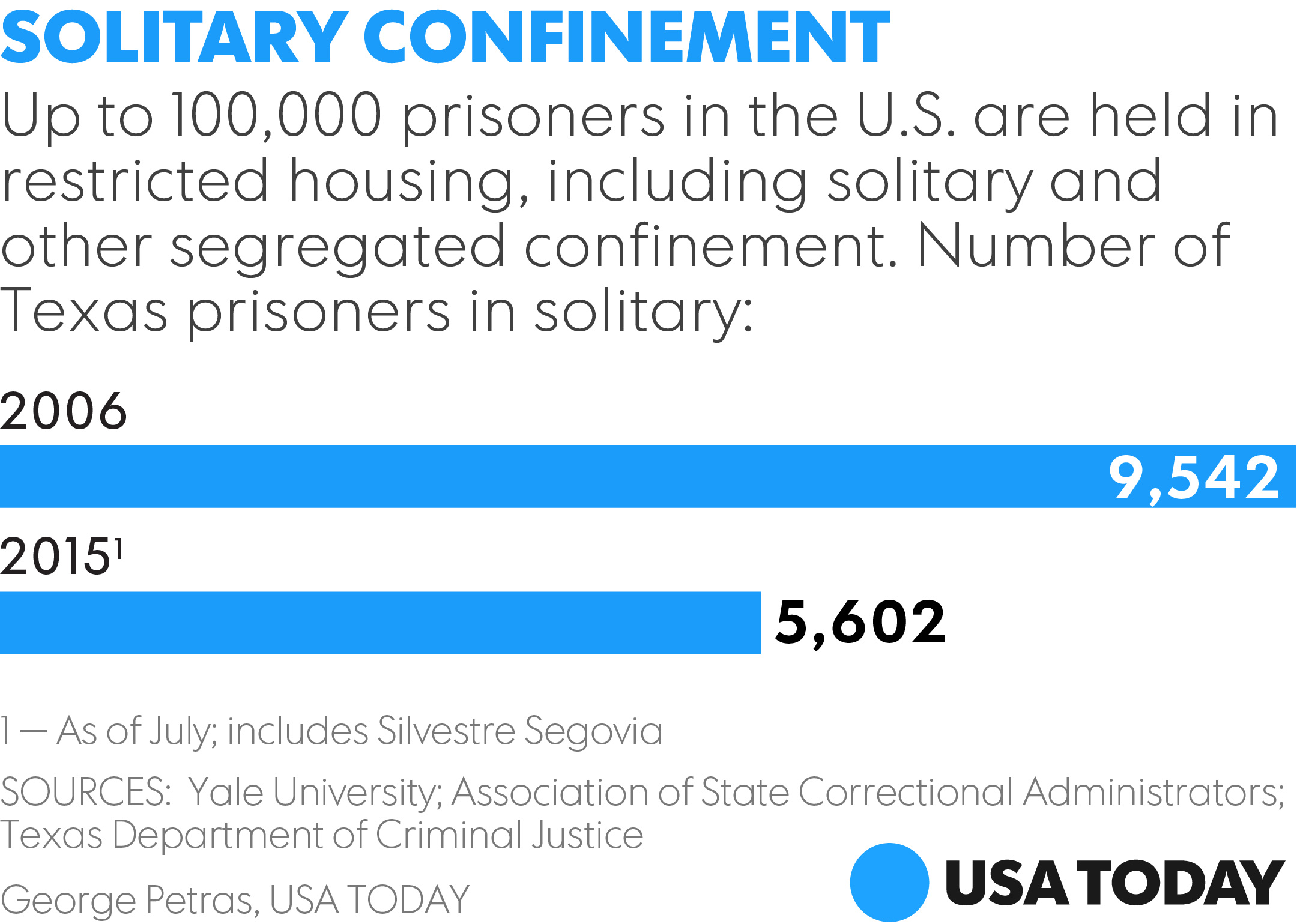
For those who remain in administrative segregation, Clark said, the Texas system is providing assistance to aid in their transition from isolation to the community.
"Public safety is paramount,'' Clark said, adding that there has been a recognition that such inmates represent an increased risk of failed assimilation once they are released. "We want to make sure that when they are getting out, they are not coming back. This is not just a Texas thing, it's nationwide.''
Indeed, last month some New York lawmakers and advocates for alternatives to solitary called for an end to such conditions of confinement. According to the report by Yale Law School and the association of prison administrators, about 4,000 of 53,000 New York inmates were being held in some form of restricted housing last year.
"The psychological damage solitary confinement does to an individual is almost guaranteed,'' Democratic Assemblyman Joseph Lentol said in a written statement in support of the Campaign for Alternatives to Isolated Confinement.
Silvestre Segovia in the visitors room at James V.
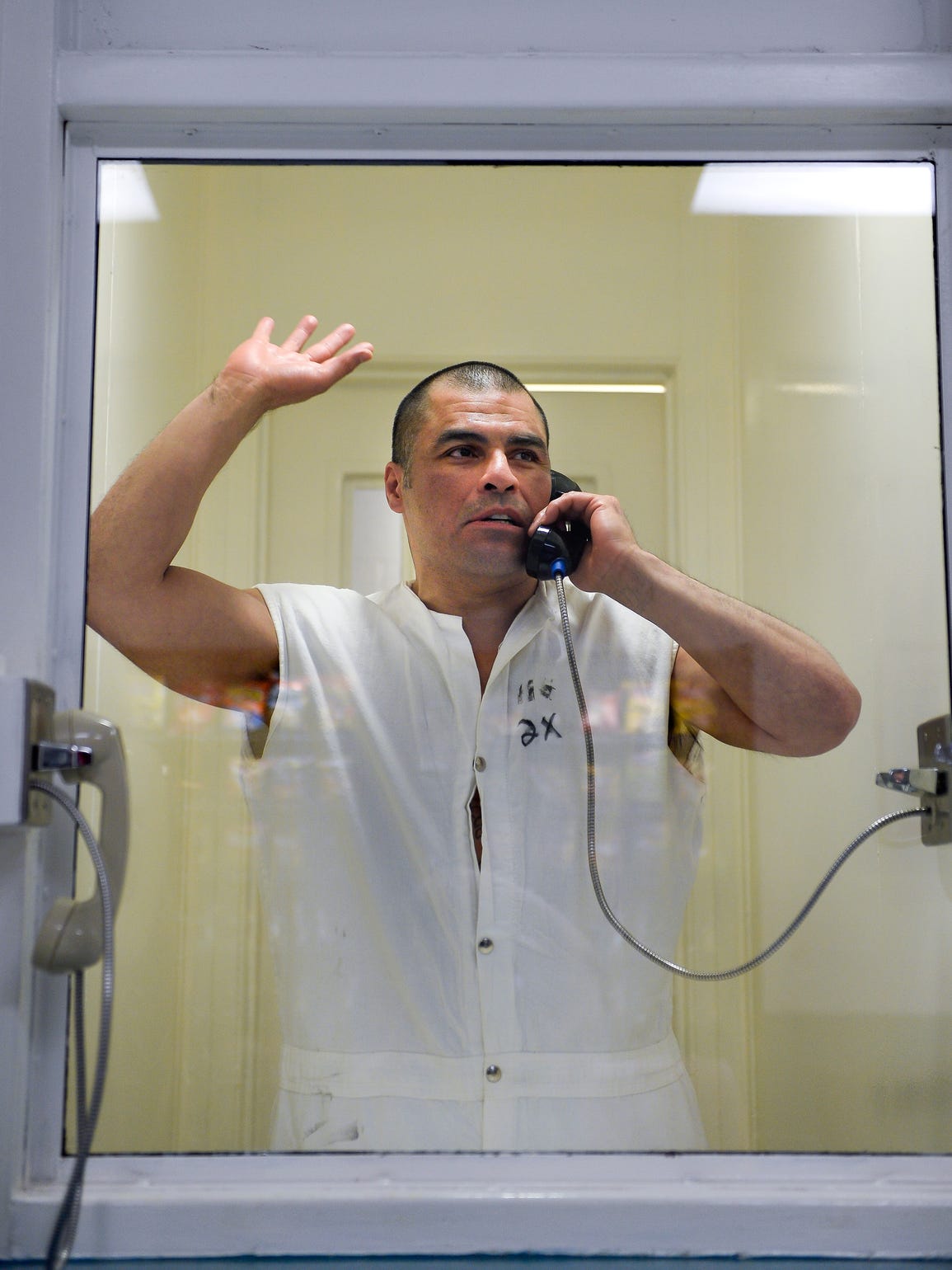
Silvestre Segovia in the visitors room at James V. Allred Unit near Iowa Park, Texas.
(Photo: Robert Hanashiro, USA TODAY)
In September, California officials settled a federal class action lawsuit that would effectively end indeterminate terms of solitary confinement for prisoners based solely on gang affiliation.
The legal action, brought three years ago on behalf of offenders held in segregation at the state's notorious Pelican Bay prison, also limits the amount of time offenders can be held in isolation. When the case was filed, according to the Center for Constitutional Rights, more than 500 prisoners had been assigned to solitary for more than a decade and 78 had languished there for more than 20 years.
Meanwhile, a December audit of the Federal Bureau of Prisons, prompted by concerns raised by Sen. Dick Durbin, D-Ill., found that while the overall population of segregated inmates had declined to nearly 9,000 last year, from slightly more than 10,000 in 2013, thousands of those inmates had limited access to re-entry programs. It also concluded that mental health services for segregated inmates were severely wanting.
John Moriarty, the Texas prison system's former inspector general, said that despite widespread criticism of solitary's broad application, "there are some people who need to be locked up 24-7, segregated from the rest of the population.''
When violent gangs ruled some Texas institutions in the mid-1980s, Moriarty said solitary proved an "outstanding management tool.''
"At the same time, I understand that there are a lot of issues to consider, including the effect of prolonged isolation,'' Moriarty said. "I believe in it, but it's got to be used wisely and decisions have to be made by educated people with the input of psychologists and other professionals.''
Chapter 4
The anxious wait
Ortencia Segovia knows that whenever her husband comes home, his transition to the free world will not be easy, just as it wasn't before.
When he arrived home in 2002 with no job and few prospects, he had been isolated for 10 years following a robbery conviction. Like eight other inmates that day, he was released straight from solitary to the street. There were no re-entry programs, just a bus ticket and $100, some of which he blew on wine coolers, a product line that debuted while he was locked down.
It took some time just to adjust to his new living space, a living room that immediately felt like a football stadium compared to his tiny cell.
A pencil sketch drawn by Silvestre Segovia while in

A pencil sketch drawn by Silvestre Segovia while in solitary confinement.
(Photo: Provided by Segovia’s wife, Ortencia)
Then there was the morning, shortly after his return, when Ortencia went to wake Segovia in their bedroom.
"I touched him and he had his fist raised, ready to hit me,'' she said, adding that Segovia told her that even in solitary confinement "you kept one eye open while you slept.''
His homecoming is likely to be more complicated this time. In addition to Ortencia, there are two young children waiting, Destinee, 10, and Paul, 9.
"I know he is strong,'' said Ortencia, who supports the small family as a home health care worker. "I know he can take what comes; I know he's missing us.''
Yet she's also concerned about how he will deal with all of the powerful forces, including alcohol abuse, that spoiled his last attempt at rejoining the free world.
"It was a miracle he was able to stay out for as long as he did,'' she said. "I tried really hard.''
Segovia, meanwhile, believes he has the strength to defeat the demons of isolation and make it to the other side, where he intends to remain this time.
"I just don't want to let this place get to me.''
http://www.usatoday.com/story/news/nation/2015/11/04/solitary-confinement-prisoners-impact/73830286/


